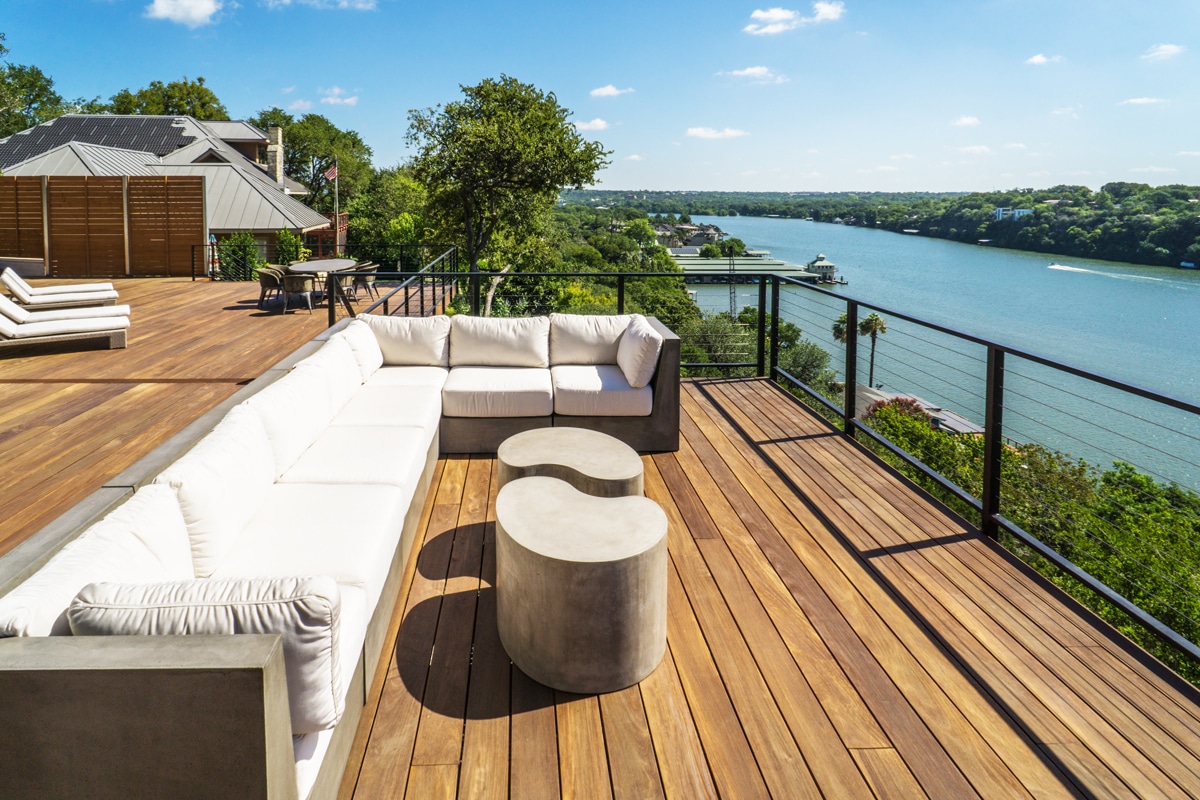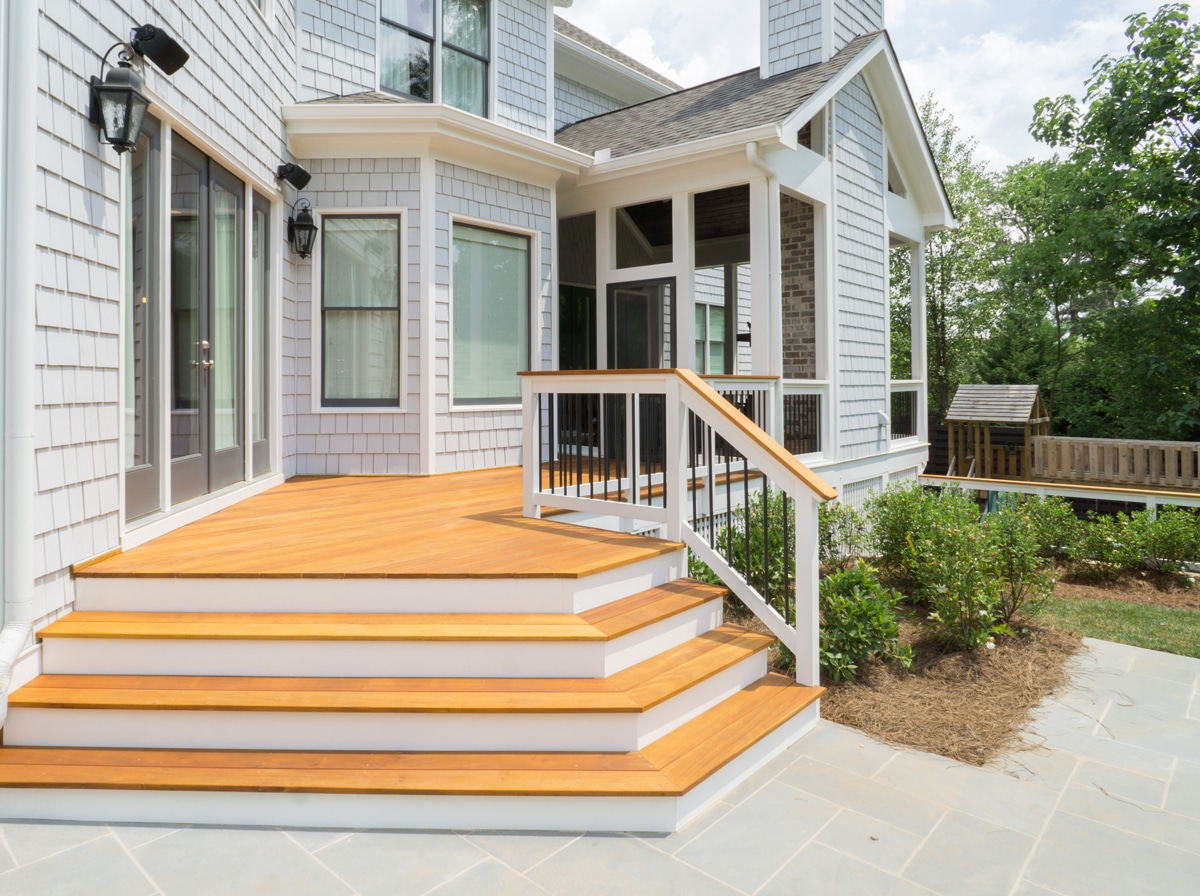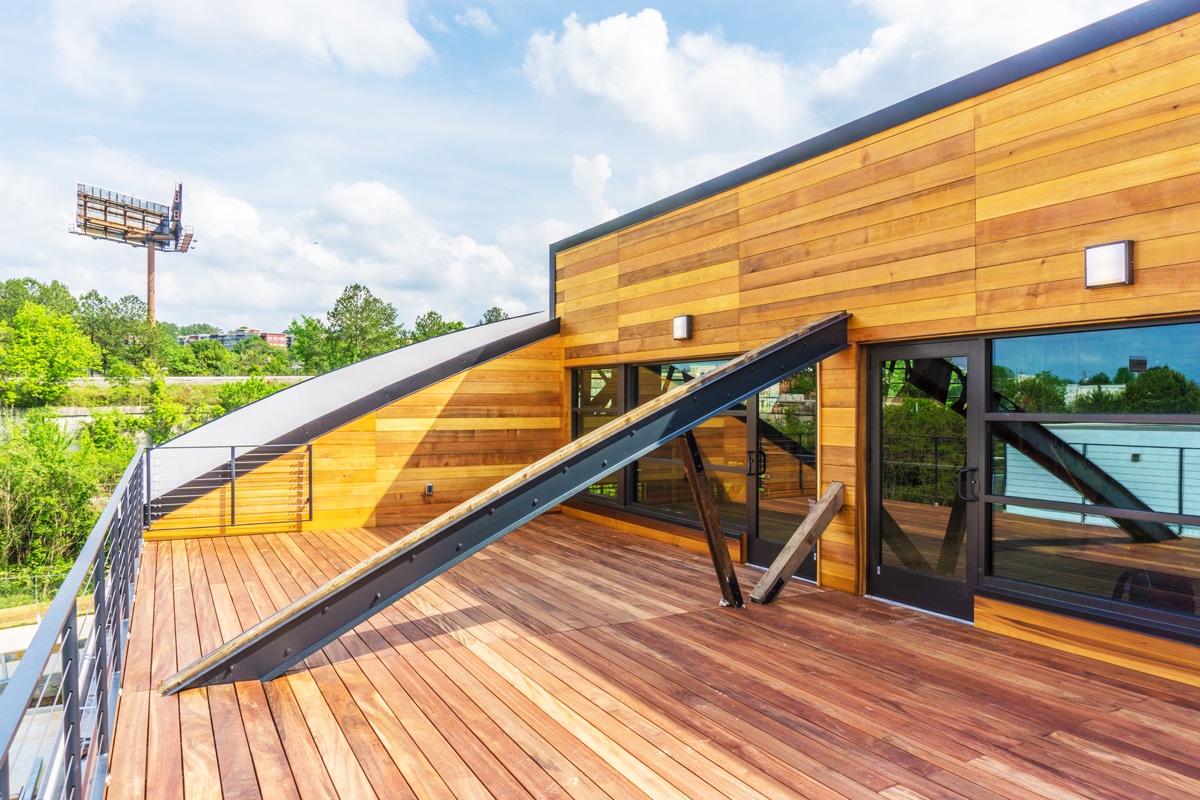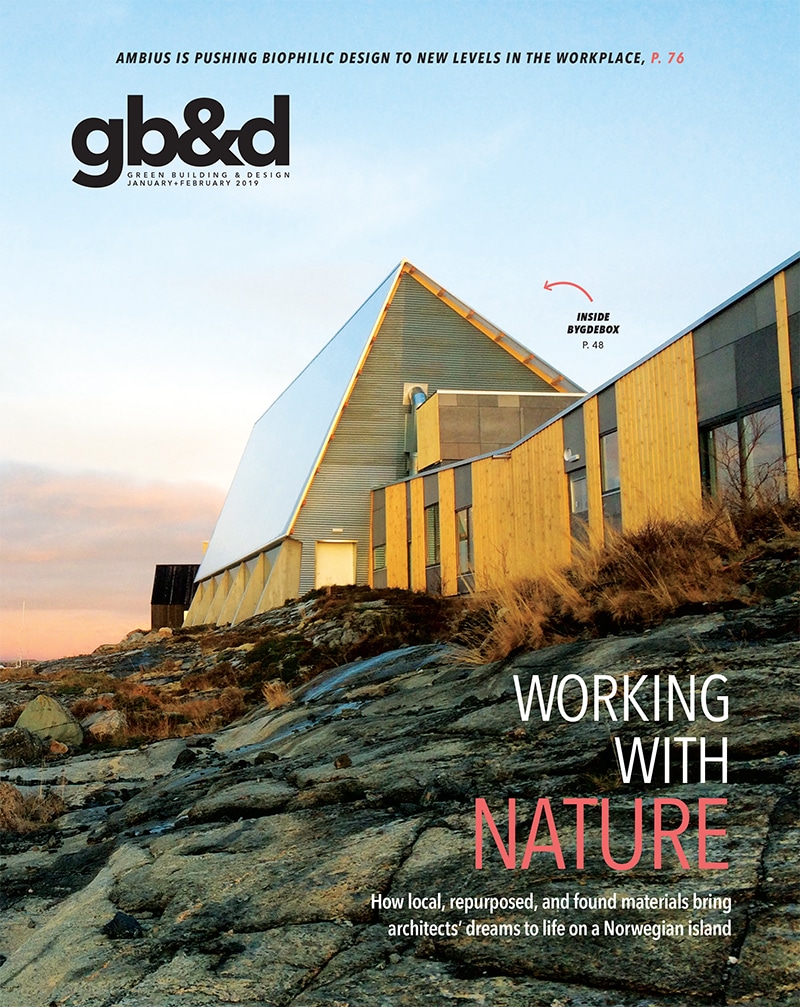Lumber experts OHC compare the best hardwoods for durability and design versatility.

[Photo: Courtesy of OHC]
In a world where many are seeking wood-like products for fear the real thing requires too much work, imported hardwoods are a game-changer. Requiring little or no maintenance with excellent durability, imported hardwoods can be used to transform any outdoor space into a relaxing, natural retreat.
Overseas Hardwoods Company (OHC) has been importing hardwoods from around the world for more than 50 years. The family-owned company is dedicated to knowing exactly where its products are sourced from and how they are harvested. OHC integrates itself in the communities and mills where they import their products—learning the language, culture, and forests inside and out. “It is important that we know exactly what we are buying,” says Ben Roberts, marketing director. “Having people on the ground visiting these plants and knowing exactly how they are getting managed and making sure the trees are harvested responsibly is extremely important to us.”
But their work does not stop there. Once received, OHC sands both sides of every board to remove strap marks and residue. The boards are hand-sorted for grain uniformity, ensuring customers get the look they want. All four species of outdoor living hardwoods come from Brazil. Shipped as decking, the boards can also be milled into hundreds of interior or exterior profiles for accent walls, siding, or soffits.
Each species of hardwood offers something different depending on design, budget, and climate. OHC experts can help recommend the right decking to create a stunning, unique outdoor space that will add value to property. “We can create anything your heart desires. We understand how the hardwoods will perform. We know how to maintain the look you want while keeping integrity,” Roberts says.

[Photo: Courtesy of OHC]
IPE
Ipe is the most dense species on the market and the most popular of all hardwoods. “The density is so high it almost functions like a piece of steel. It’s so dense it will actually sink when placed in water,” Roberts says.
The integrity of Ipe holds up over time. It’s ideal for commercial projects, from roller coasters to the Houston Zoo and the Coney Island boardwalk.
BIG BENEFITS: Ipe is very durable, with a life of 25-plus years. It’s also popular for rooftop decks because of its high fire resistance.
KEEP IN MIND: Depending on sun exposure, ipe will turn gray over time if not properly oiled to maintain its rich brown look. But unlike cedar and pine, UV rays only penetrate the surface. The gray color can be reversed with light surface sanding, power washing, and refinishing with a UV inhibiting oil.

[Photo: Courtesy of OHC]
Garapa
This species of hardwood has a golden brown color similar to beige. It’s often chosen for projects where the designer wants the look of cedar but cleaner. As with all hardwoods, garapa has no large knots. “It’s great for modern applications,” Roberts says. “It complements clean lines with a lighter color.” Even if left to gray, garapa continues to maintain an even color.
Less expensive than ipe, garapa has the lowest density of all decking hardwoods and is considered moderately durable with a life of 10 to 15 years—five times stronger than cedar. The lightest of all the hardwoods, it’s commonly used in traditional-style homes and multifamily complexes where designers are trying to achieve a more natural look. Garapa decking is also kiln-dried to increase stability.
BIG BENEFITS: Affordable and five times stronger than cedar.
KEEP IN MIND: Garapa is considered moderately durable, with a life of 10 to 15 years.

[Photo: Courtesy of OHC]
Cumaru
Less popular than ipe with a similar look, cumaru is less expensive and often used to value-engineer a project. It has slight differences in color compared to ipe—having
more purplish hues compared to ipe’s brown. It typically grays darker than ipe.
Cumaru has been used on municipal buildings, restrooms, and as decking on buildings near beaches. “Even when getting pounded by a harsh shore line, salt water, sand, it performs very well,” Roberts says. It is kiln-dried for stability and slightly less dense than ipe but still very durable with a life
of 25-plus years.
BIG BENEFITS: Cumaru is the least expensive of these hardwoods and stands up to tough weather.
KEEP IN MIND: It’s slightly less dense than ipe.

[Photo: Courtesy of OHC]
Tigerwood
Exactly how it sounds, when oiled, tigerwood takes on a reddish hue with darker stripes—mimicking the look of a tiger’s fur. Although significantly less dense than ipe, tigerwood is still considered very durable with a life of 25-plus years. OHC’s tigerwood decking is kiln-dried to remove moisture content, making it more stable.
Because of its unique look, tigerwood is commonly used as an accent on modern homes. “It looks beautiful next to the clean modern lines of a concrete home,” Roberts says. “It is very striking.” Tigerwood needs to be regularly oiled and maintained in order to keep its look. If not, like all hardwoods, it will turn gray.
BIG BENEFITS: High durability, with a life of 25-plus years.
KEEP IN MIND: Regularly oil Tigerwood to maintain its look.
Learn more about OHC and see more gb&d approach stories.
FROM OUR JAN+FEB 2019 ISSUE

The preferred publication of leading green professionals.
